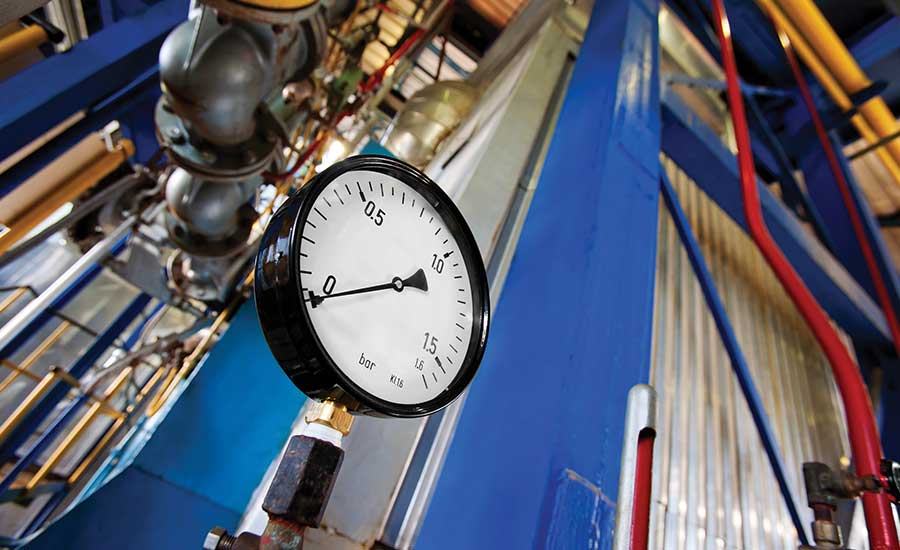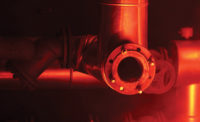Life is filled with unintended consequences and sometimes so are boiler rooms. When you’re tasked with designing and/or installing a replacement boiler for a customer, you’re certainly performing your due diligence, but there may still be problems that you do not anticipate.
Electricity
A contractor visited a job site to look at a boiler project. The existing boiler was an old cast-iron sectional boiler with an atmospheric burner installed when Nixon was president. The customer wanted some redundancy in the new heating plant and asked him to quote two boilers. The contractor wanted to get this job, so he cut his margins. He was awarded the contract and ordered the boilers. When they arrived and were set in place, the contractor received a call from his lead installer. The foreman explained that each new boiler required 30 amps and the electrical panel was filled. A new sub electrical panel was required at the cost of a couple thousand dollars. This expense was not included in the bid, so the contractor called the owner.
After a heated discussion, they agreed to split the cost. This disagreement caused tension between the owner and the contractor for the rest of the project. The contractor had to jump through extra hoops to complete the job, and the customer withheld his final payment. The job ended with each party feeling anger and resentment. There are still many buildings with atmospheric burners that use virtually no power to operate. Any new boiler will most likely have a power burner and require more electricity. The contractor should have verified the available electric before submitting the proposal.
FIGURE 1. An auxiliary heater for a boiler room. This is sometimes needed because the new boilers do not have the same jacket loss.
Orphans
A designer was asked by his pastor to help him choose some new boilers for their church, and he gladly agreed to help. Of course, this was all done gratis and took time away from his paying clients. He sized the new boilers and arranged for some reliable contractors to provide bids. The new boilers were set in place, and the designer received a frantic call from the pastor asking him to come to the church right away. When he arrived, he saw the contractor, pastor, maintenance man, and president of the parish council each standing there glaring at one another. The room was thick with tension. The contractor was the first to speak and said he was concerned about the water heater flue, which was going to be orphaned in the old chimney because the new boilers were vented through the sidewall. “The chimney is way too big for just the water heater,” he said.
He explained how the flue gases could condense, which could destroy the chimney. He also cautioned the room about back drafting, which may allow carbon monoxide into the building. His solution was to either install a chimney liner or inducer fan and vent the water heater through the wall. Both options were expensive. The church representatives felt the contractor was trying to “rip them off.” The contractor even suggested they use their own plumber to rectify the issue at a lesser cost.
The church elected to pay for a chimney liner and secretly blamed the designer for his oversight, which angered the designer as his services were provided without one penny of payment.
FIGURE 2. Electrical breaker panel. Verify the electrical panel has enough capacity for the new boilers.
A quick way to check to see if you need to address the orphan water heater is to consider the “Seven Times Rule,” which states the chimney area should be no more than seven times the area of the connecting flue.
For example, a typical 3-inch water heater flue has an area of slightly more than 7 inches. That will limit the area of the chimney to no more than 49 inches. If the existing chimney area is larger than that, provisions for the flue have to be made.
Door Switch
An engineer designed a replacement boiler plant for a local high school, which met the current codes of the locale, including the ASME code, “Controls and Safety Devices for Automatically Fired Boilers,” which is more commonly deemed CSD 1. The code contains a clause in Section CE-110 that states, “A manually operated remote shutdown switch or circuit breaker shall be located just outside the boiler room door and marked for easy identification.”
FIGURE 3. Combustion air louver. These may not be needed if the new boilers have combustion air directly vented to the burner.
It didn’t take long for the teenagers to find the switch and shutoff the heat for the building. When it happened several times a day, the principal called the superintendent, who called the architect, who called the engineer. The engineer visited the job site and decided to relocate the switch to just inside the locked boiler room door. While it does not meet the exact code, it seemed like a safe alternative. On another project, another designer chose a boiler switch that looked like a light switch. As you can imagine, the switch was turned off when anyone left the boiler room and shut off the power to the boilers regularly.
A/C in the Boiler Room
After new boilers were set in place and confirmed to be operating correctly, the contractor was anxious to get the final payment and move on to the next project. The boiler inspector arrived for the inspection and said, “The combustion air for the boilers is wrong.”
The contractor asked what he meant. The inspector continued, “There is an air conditioner inside the room. According to the International Mechanical Code, the boiler room requires either a refrigerant monitor or the combustion air to be vented directly to the outside for each boiler. You have neither.”
He showed the contractor Section 1105 of the code, which read, “Fuel-burning appliances shall not be prohibited in the same machinery room with refrigerant-containing equipment or appliances where the combustion air is ducted from outside the machinery room and sealed in such a manner as to prevent any refrigerant leakage from entering the combustion chamber, or where a refrigerant vapor detector is employed to automatically shut-off the combustion process in the event of refrigerant leakage.”
The contractor complained that all he did was replace the boilers. The job had nothing to do with the air conditioning. The argument was futile. The least expensive option for this project was to install a duct from the outside wall to each burner.
Sizing the Steam Boiler
An installer met with the building’s owner to discuss the replacement of an old steam boiler in a tall apartment building. During the meeting, the owner told the installer he recently replaced the windows and added insulation to the building. He suggested the new boiler should be much smaller with the new windows and insulation, and the installer agreed. Being a conscientious contractor, he performed a heat loss analysis of the building and sized the new steam boiler for 15% larger than the heat loss. He used this same method for the hydronic boiler he replaced last year, and that project worked great. The new steam boiler was about half the size of the old one, so the owner was happy as this opened up storage room in the boiler room. The contractor felt like a hero because he installed a much smaller boiler than the other bidding contractors, who pledged to replace the existing boiler with one of the same size.
Once the outside temperature dropped, the complaints started to arrive. The rooms on the first few floors were warm, but the ones on the top floors were not. “How can that be?” he wondered. The problems seemed to get worse as the weather got cooler. The owner called and said the boiler is running continuously, and the people on the top floor are still cold.
“We never had these problems with the old boiler,” the owner insisted. “You need to get here right away.”
FIGURE 4. A gas pressure booster had to be added after they found there was not enough gas pressure on-site for the new boilers.
When he arrived at the job site, he saw the windows on the first few floors were open, and the boiler pressure gauge had no pressure reading. The apartments on the higher floors had space heaters. After doing research, he found the problem: The new boiler was undersized. While sizing a boiler according to the building’s heat loss works for hydronic boilers, it does not work for steam boilers. You see, steam is a gas. For it to work properly, the steam has to fill all the pipes and radiators. A steam system has to be sized for the connected load and not the heat loss of the building. This includes all the pipes and radiators. The radiators closest to the boiler would consume all the steam, and there was little left for the radiators further away. After months of angry calls, late night service calls, and threats of lawsuits, the contractor realized the only solution was to increase the size of the heating plant by either adding another boiler or replacing the existing one with a larger one.
Sizing the Heating Plant
Tired of dealing with a constantly failing boiler and comfort complaints, a facility owner told the engineer to design a system with some redundancy. After researching past boiler projects in the office, the designer discovered that most of the previous designs included two boilers, each sized at 75% of the load. He thought, “Why change it?” It worked before, and it will work now.
During the design phase, the engineer was sipping a coffee and had an epiphany. If the design consisted of two boilers each sized at 75% capacity, the total boiler heating capacity would be at 150% of the building load. In other words, the boilers would be 50% oversized for the building load, even on the coldest days. In addition, everything else would be oversized by 50%, including the flue, circulator, expansion tank, piping, combustion air, and electric. The designer changed the design to four boilers, each sized at 25% of the load. The owner would still have 75% backup in case of a boiler malfunction, but the entire heating plant would be 33% smaller and much more efficient.
Isolate the Idle Boilers
A designer followed the International Energy Conservation Code, Section C403.4.3.5, which states, “Boiler plants including more than one boiler shall have the capability to reduce flow automatically through the boiler plant when a boiler is shut down.”
The engineer chose to use on-off valves to isolate the idle boilers — slam dunk. Once the outside temperature dropped, the owner noticed when either boiler shut off, it would not restart until the manual reset button for the high-temperature limit was pushed. The contractor replaced the limit controls, and the problem persisted. By this time, the engineer was involved, and a meeting was called with the owner, engineer, installer, control contractor, and boiler representative. The discussion found that even though the burners are powered off, heat is still generated inside the boiler from the hot surfaces, and since there is no flow, the temperature rises enough to trip the manual reset limit control. To resolve the issue, the control contractor had to add a time delay on the isolation valves to allow the heat from the boilers to dissipate before shutting the valves.
Jacket Loss
Old boiler rooms in winter are usually rather toasty places. They remind me of tropical rainforests. To alleviate this, a contractor installed new condensing boilers that vented through the wall. Since the boiler room no longer had the old boilers, which were hot all heating season, and the single wall flue, the room was much colder. It was so much colder the owner was afraid the pipes would freeze. To remedy the problem, the contractor had to cover some of the combustion air louvers and installed an auxiliary heater.
Gas Pressure
An old boiler with an atmospheric burner operated at 3 inch w.c. of gas pressure for almost four decades. New boilers have more efficient power burners and require a minimum of 7 inch w.c. gas pressure. While it seemed like an insignificant increase, the most the old, overextended gas pipes could muster was 5 inches of gas pressure, which was not enough for the new burner. The burners kept tripping on the flame safeguard, resulting in no heat for the building and its affluent occupants. By the time I was asked to look at the project, lawyers were involved. The first thing I noticed was a brand new gas pressure booster.
“Wow, that’s expensive,” I said to the installer. He nodded his head in agreement. When replacing an old boiler with an atmospheric burner, gas pressure may be a problem. I urge you to get something in writing from the utility assuring the proper gas pressure is available.
Sometimes, even the best-laid plans can backfire on you.









